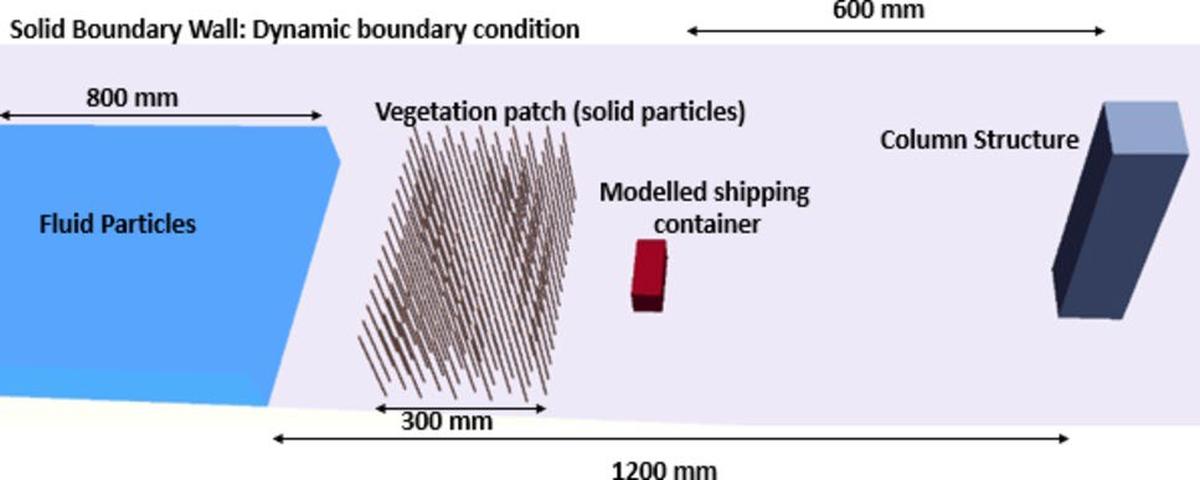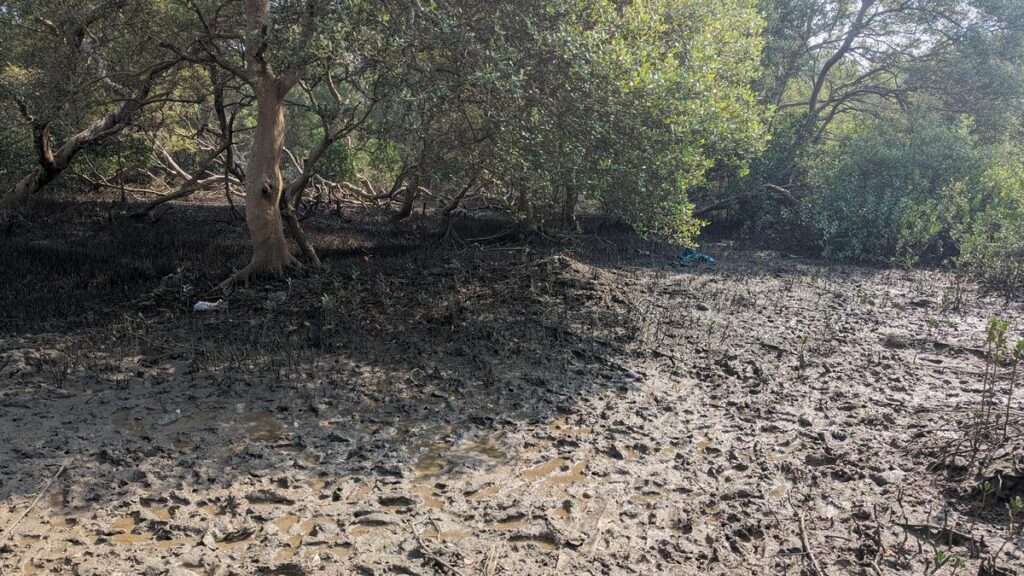Coastal mangroves act as bio-shields against natural catastrophic disasters, including cyclones and flooding. Researchers have said that if the myriad natural barriers along the India’s coastline, including mangroves, did not exist, destruction by tsunami and coastal floods could have been more. Constructing sea walls is possible, but they are expensive and may disrupt natural processes.
In a recent study, a team of researchers from the Indian Institute of Technology Bombay (IIT Bombay) focused on evaluating how emergent coastal vegetation acts as a natural barrier against the impact of tsunamis.
Also Read | Coastal flooding harms different tree species differently: study
The team included Professor Manasa R. Behera, Department of Civil Engineering and Centre for Climate Studies, IIT Bombay; Associate Professor Amin Heidarpour, Department of Civil Engineering, Monash University, Australia; and Aditya Gupta, Research Scholar, IITB-Monash Academy of IIT Bombay, currently working as a researcher at the School of Environmental, Civil, Agricultural, and Mechanical Engineering at University of Georgia, U.S.
To investigate the effectiveness of mangroves in reducing tsunami-induced debris impacts on buildings and bridges, the researchers created a smoothed particle hydrodynamics (SPH) model, a computational method used to simulate the flow and behaviour of fluids, and observe complex interactions between water, vegetation and debris.
“We need to understand that nature is supreme, and we must align and work with nature and not against it. In this case, waves, coastal currents and coastal sediment transport are the predominant natural processes. It is advisable that any coastal defence system must not adversely interfere with the natural processes,” Professor Behera.
Also Read | How citizen groups in Kerala are planting mangroves as the first line of defence against coastal flooding

Simulated coastal defence system.
| Photo Credit:
Special Arrangement
Among the varied types of vegetation found in the coastal regions, the researchers chose emergent vegetation for the study. Emergent vegetation is aquatic plants rooted in the soil, while their stems, leaves and flowers emerge above the surface of water. Mangroves are emergent trees with sturdy submerged roots, stiff stems, and trunks to reduce wave forces.
“Mangroves are the best examples of natural bio-shields against extreme ocean disasters. Mangroves present at Bhitarkanika, Odisha have safeguarded the coastal regions against cyclones that attack almost every year,” Professor Behera said.
On the contrary, studies have found that floating and submerged types of vegetation are either swept away by tsunami waves or are not strong enough to dissipate the wave energy.
The experimental set-up involved a replica of a coastal region using a large water tank (dam-break flume) containing a scaled-down column and an aluminium debris model. The column structure mimicked a coastal building, and the debris model was a replica of a shipping container. A vertical sliding gate was opened to release high-speed water mimicking tsunami-like conditions in the tank. Upon releasing the water, the sensor in the column measured the impact force of the debris hitting the structure. Similarly, the accelerometer in the debris model recorded its speed and movement before impact. The study found that heavier debris caused more impact forces on the column structure.
The numerical method involved computer simulations to measure the performance of the vegetation. SPH modelling was used to simulate the impact of the debris on the column structure, and the effectiveness of the vegetation in decreasing the wave forces.
Professor Behera explained that this simulation studied the wave interaction on the models of two types of emergent vegetation — rigid staggered vegetation (RSV) and tilting staggered vegetation (TSV). RSV stays upright, which represents the rigid mangroves or stiff emergent vegetation in real scenarios, while TSV symbolises a natural bend in vegetation due to forceful waves. The SPH simulation tested the performance of vegetation in reducing the wave force, slowing down the debris movement, and lowering the wave height, using three indices — Reduced Fluid Force Index (RFI), Reduced Momentum Index (RMI), and Transmission Coefficient (CT), respectively.
RFI and RMI are higher for rigid staggered vegetation than tilting staggered vegetation. The rigid vegetation efficiently resisted enormous volumes of water and reduced the wave energy. Compared with the 89% reduction of debris impact with tilted vegetation, rigid vegetation reduced the debris impact on the column structure by 96%, Professor Behera said.
“Rigid emergent vegetation can be planted along the coastal zones to reduce erosion, provide protection against storm surges and coastal floodings. Vegetation also known as bio-shields are the eco-friendly protection that will act as carbon sinks and help to achieve India’s net zero target. The study shows that the emergent type of vegetation is an effective defence system that significantly reduces the damage caused by tsunami waves to coastal infrastructure. Further study is required to replicate it in natural conditions with varied vegetation types, patterns of wave movement, and different types of debris materials,” he added.
Researchers believe that future studies can focus on advanced simulations for more accurate findings. The findings of this research provide clues to coastal planners on how to select and use vegetation types in designing a better disaster mitigation strategy. Professor Behera said that the study should help policymakers and engineers adopt a resilient, cost-effective, and sustainable defence system, fostering the coastal ecosystem using a nature-based solution.
Published – February 24, 2025 07:13 pm IST

